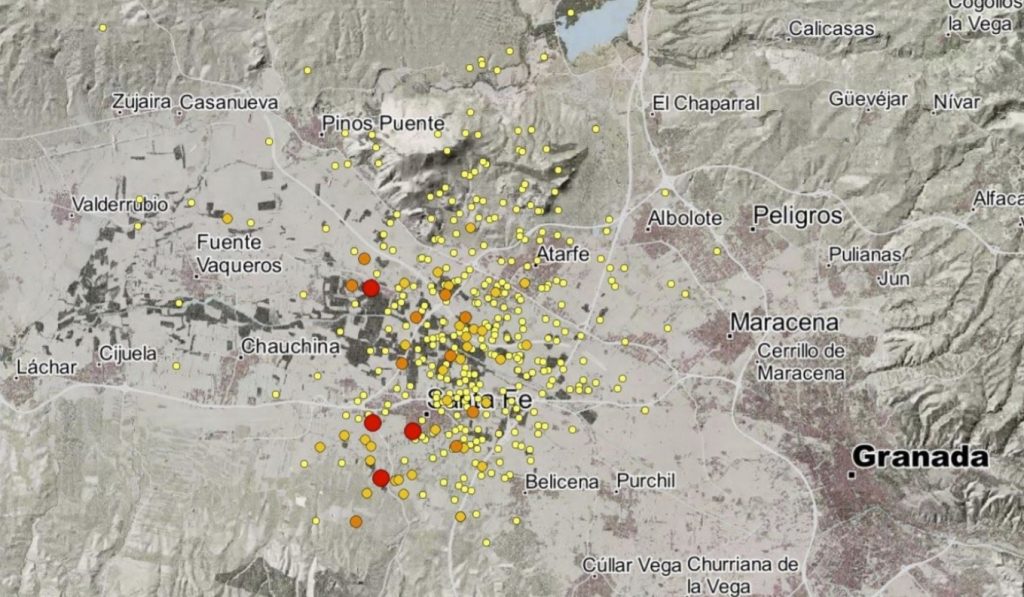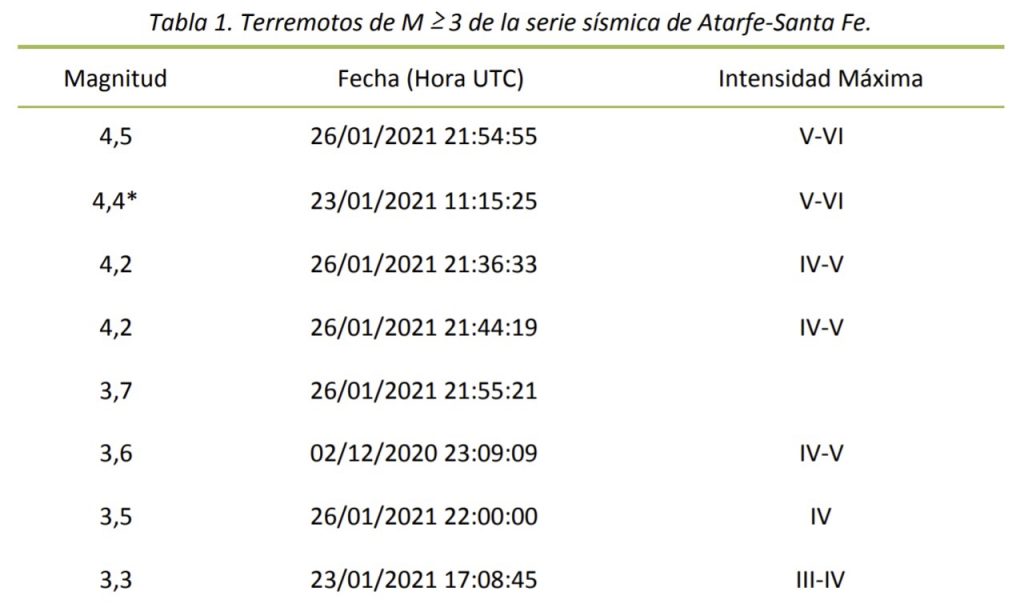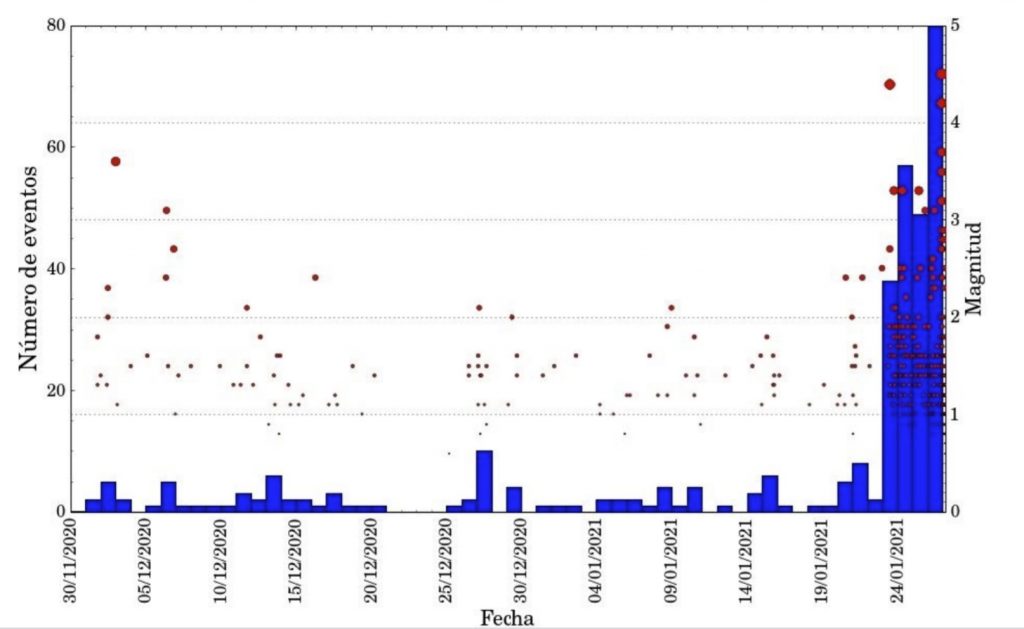
The National Geographic Institute (IGN) has registered around 40 earthquakes in the surroundings of Santa Fe and Atarfe between 10.36 p.m. Tuesday and 6.40 a.m. Wednesday.
During the night, three tremors had magnitudes above M4.0. This is big for the area.

The largest earthquake of the series was a M4.5. It occurred on Jan. 26th, at 10:54 p.m. with the epicenter in Santa Fe (Granada). It was preceded by two M4.2 earthquakes at 10:44 p.m. and at 10:36 p.m., also with an epicenter in Santa Fe. These 3 quakes were followed by weaker aftershocks.
The 3 stronger quakes were felt across cities in six Andalusian provinces (Granada, Malaga, Jaén, Córdoba, Almería and Seville), where hundreds of citizens took to the streets.
Meanwhile, the IGN has detected more than 200 earthquakes since the M4.4 earthquake that occurred last Saturday.

Atarfe, Pinos Puente and Santa Fe
This swarm of earthquakes has prompted Andalusian officials to raise the Seismic Risk Emergency Plan to pre-emergency phase.
The latest IGN report shows that a series of shallow earthquakes is ongoing since the beginning of December 2020 near the towns of Atarfe, Pinos Puente and Santa Fe, northwest of Granada.
The series was reactivated last Saturday, Jan. 23rd, when a M4.4 hit the region. Experts attribute the recent seismicity in the Vega de Granada to the movements between the Eurasian and African plates, which may sometimes release some energy accumulated in the nearby faults.
More earthquake news on Strange Sounds and Steve Quayle. [IGN]
In the meantime, subscribe and tell your friends about my new Newsletter! If you like us, you can follow us on Facebook and Twitter. By the way you can also make a donation through Paypal.













Haven’t heard about earthquake activity in that area very much. Eurasian and African textonic plate activity they say. Hmmm.